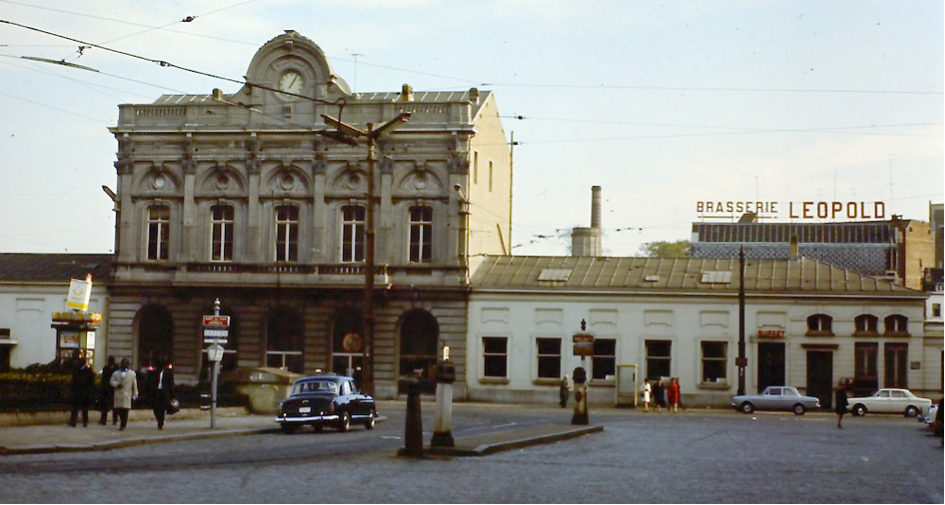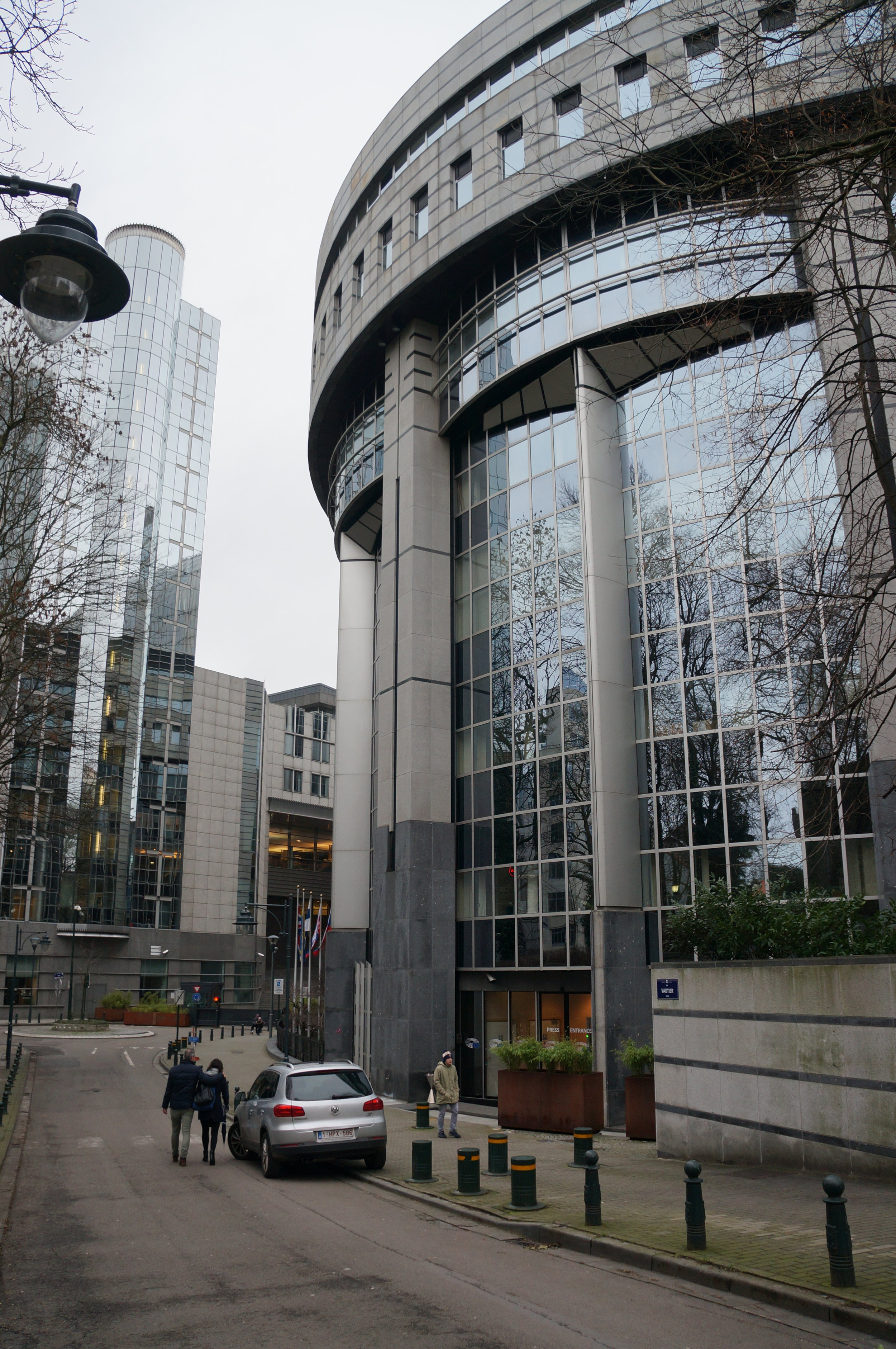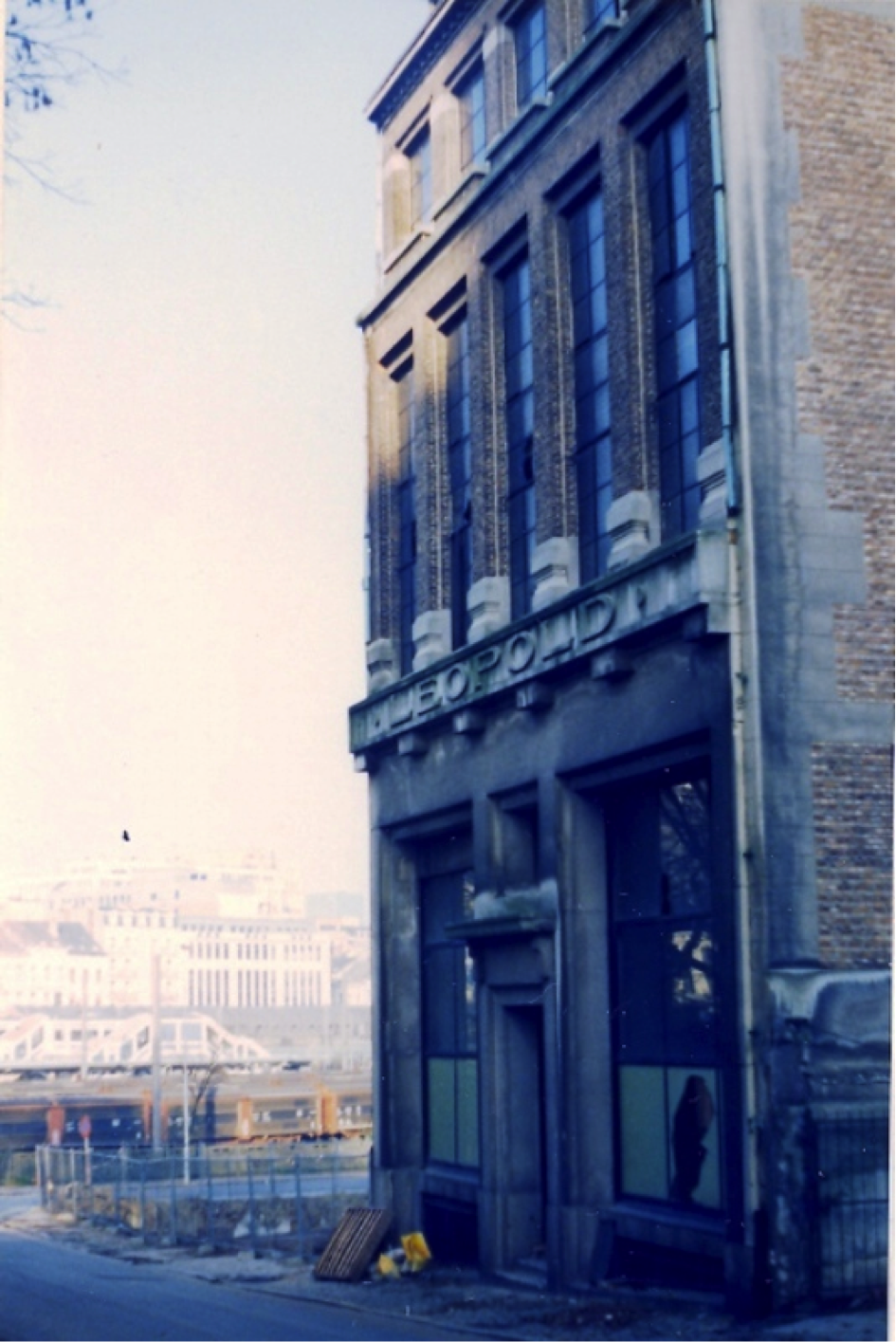Beer and the City // When beer was brewed at the European Parliament: Brasserie Leopold and the "Whim of the Gods"
Rue Wiertz, in Brussels’ European district, is a nothing street. Bound at both ends by slate-grey security barriers to protect the European Parliament, it is an unremarkable street in an unremarkable part of town. But, underneath the glass and stone towers that line the street, is some remarkable history. This spot, at the confluence of Rue Wiertz, Rue Vautier, and Parc Leopold, is where brewing in Brussels died. More specifically, it is where Brasserie Leopold – the last commercial brewery operating in Brussels city soil – shut its doors in June 1981.
Not that you could tell from the state of the place today. All that is left of the brewery – possibly – is a dilapidated redbrick wall on Rue Vautier that abuts an entrance to the parliament. It is a sad fate for a brewery that occupied this plot for over a century and one which shaped the neighbourhood around it.
Three Star Pils
Brasserie Leopold was originally Saint Hubert, producing faro and geuze in Elsene from the late-17th century onwards. In the mid-1800s the brewery owners were looking for a new site where they could grow the business. They eventually settled on Rue Vautier, opening the rechristened Brasserie Leopold (in honour of the Belgian king) in 1880. They soon shifted production away from traditional, spontaneously-fermented beers towards increasingly-popular beers in the German style. The first Brasserie Leopold bock beer was launched in 1888, and in the years that followed Brasserie Leopold built its business on the back of beers with names like White Star Pils and Three Star Pils.
The Arrival of Artois
The brewery grew to occupy a plot stretching from the Museum of Natural Sciences to the entrance to the Bavarian state permanent representation on Rue Wiertz. It continued to flourish, but as the collective impact of economic crisis, increased competition, and industry consolidation accelerated, outside investment in the brewery was needed.
This external investment was the beginning of the end of Brasserie Leopold. In the early 1970s Heineken were brought on board, but they eventually sold their stake to Artois (of Stella) in 1976, who proceeded to do to Brasserie Leopold what they did to all of the Brussels breweries – they ran it into the ground. In June of 1981 Artois shuttered the brewery, laying off the 150 staff who still worked there and bringing to an end (for 30 years) commercial brewing in Brussels city.
"A neighbourhood that totally vanished"
It used to be that you could stand on Place du Luxembourg, next to the statue honouring British industrialist John Cockerill, look out over Gare du Luxembourg and see the smoke stacks and signs announcing Brasserie Leopold. Brewery and station were intimately connected; they shared a name, they shared rail infrastructure, and eventually they shared the same fate. From the 1970s onwards, the European Union’s (then still the EEC) presence metastasised out from their base at the top of Rue de la Loi, gradually transforming a swathe of Brussels in the process. Jean Goovaerts of Brasserie de la Senne remembers “a neighbourhood that totally vanished around quartier Leopold” as the demolition crews dismantled the “amazing” brewing equipment.
In this context, a now-derelict Brasserie Leopold and a run-down Gare Leopold were never going to escape the clutches of developers and politicians. The brewery complex did not share the good fortune of contemporaries like Wielemans in Vorst or Atlas in Anderlecht – breweries on unsavoury districts left to their own decrepitude. The real estate here was too precious.
"The Whim of the Gods"
By 1986 plans had been made to build the “Espace Leopold” as a prospective seat of the European Parliament in Brussels. By the mid-1990s the train station had been hidden underground. On the site of Brasserie Leopold was built the Spaak building, after the Belgian statesman, which houses the parliament’s meeting chamber. This Spaak building was renamed the Caprice des Dieux, or “Whim of the Gods”, by locals who saw a resemblance in its shape to the packaging of a local cheese brand. Only the old station hall on Place du Luxembourg remains, appended on both sides by glass walkways to the European Parliament.
The vista from Place du Luxembourg is much changed now. The developers and the politicians and the bureaucrats have scrubbed clean any trace of the old life lived here. In its place is a dead zone of sanitized, wind-swept “public” spaces surrounded by soulless glass-and-concrete blocks, banal in their ugliness. Place du Luxembourg – or “Place Lux”, or “Plux” – has become a playground for the youthful elite that work in these towers and in the surrounding streets.
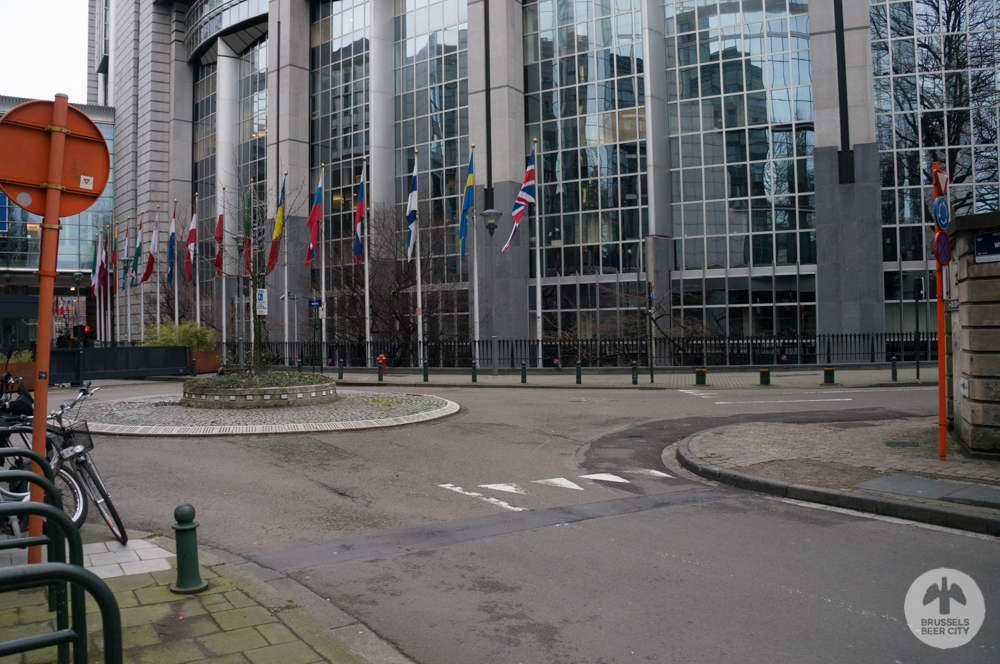
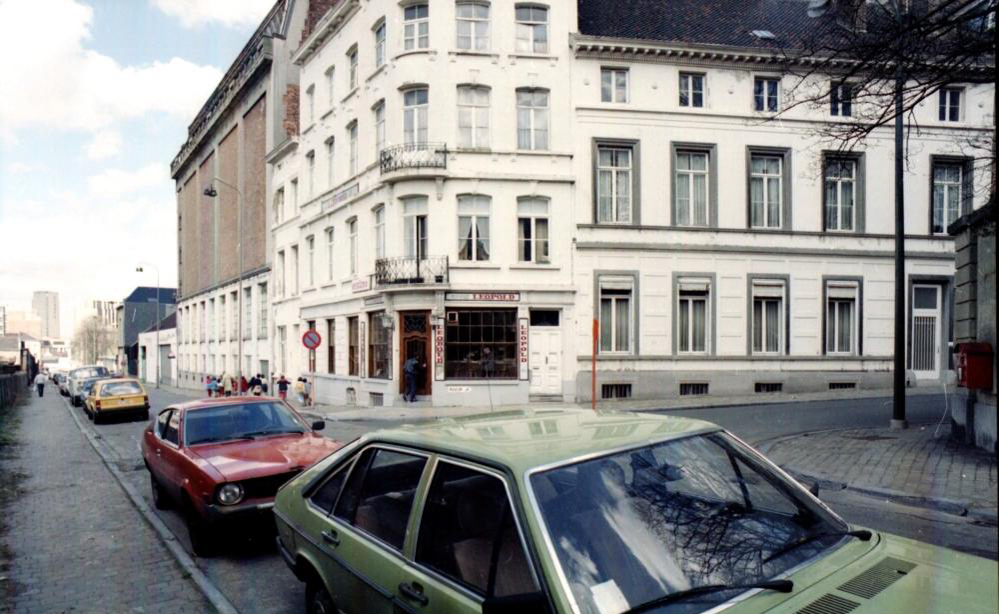
The urban redevelopment that tore down the remnants of the old neighbourhood and transformed this part of Brussels is still going. Irish bars have been turned into salad bars, sports bars into organic beer bars. Café Marnix on Rue du Luxembourg, one of the few old-fashioned bars left, has been on the verge of closing down for months.
Back on Rue Wiertz, there are many memorials dotted about the street. To the ostriches who once lived here when the park hosted a zoo. To the creation of the Euro. There is even a piece of Berlin Wall plonked down between the entrances to Parc Leopold and the parliament. There is no plaque, no monument, to what was – until very recently – the last brewery standing in Brussels.


